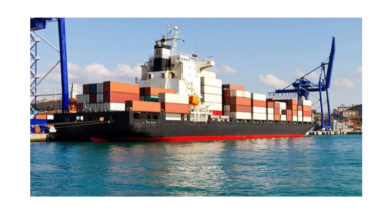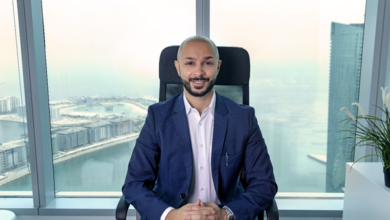Straight Talk
Emirates Neon Group, A.K.A ENG is almost a household name. Its logo and image are all over the town and on many billboards across UAE and beyond. So when it comes to signage and what goes down in outdoor and indoor regional advertising markets, the company is one of the best source of information. It is no brainer when we decided to dig deeper into the regional signage industry, we had to go straight to ENG’s premises in Sharjah. Rehan Merchant, Company’s CEO also was very open and more than willing to talk to us. He was born in Karachi and was educated in Dubai and UK. The company has 1200 employees in its payroll throughout GCC countries as well as Kenya, Egypt, Philippines and Pakistan. ENG churns out 80,000 sq. meters of media per month.
The secret ingredient
In case of companies such as ENG the burning question always is the secret behind company’s expansion and strong grip on the market. Is there any secret ingredient? Surprisingly the answer is simple.
“The key thing we have always looked at is innovation. My father came here in the late 50’s. The reason why you see digital machines in the market at the moment is because my father brought the first unipole from the US in 1988. He wanted to expand. At that time, he saw these poles with a sign on top. He travelled to the US every year to explore new technologies, new products and innovation. It took us 6 months to figure out how to install, where to install, which is the right place to install and then we finally installed it. The next landmark event in our history is when during 1970’s my father invested in flex based materials from US.”
 “But obviously innovation is not enough. Back then everything was relationship driven. There was enough market and enough business going through but people wanted to work only with certain people. My father is a self made man. He started schooling as well as working at the same time from the age of 7. He was always out. So when he basically came to Dubai, he immediately said this is what we need to do. We have been doing this in Pakistan as my grandfather was also in the same business. He wanted to offshoot in another country and that is why he came to Dubai. When we brought unipole to Dubai, we realized we need to print as well. So at that time (1988 or 1989) we bought the first digital printer from Signtech USA. The machine was printing at 4sq meters per hour. Now we have printers which that run at 100 sq meters per hour. The industry has changed to large extend from 89 till now. We have around 27 years of experience and seen a huge growth in how things and processes have evolved. We have evolved as well. To put this in perspective let me give you an example. If someone wants to print business cards, he can go to a printer with a CD and get it printed. The margins in the industry which were there 10 to 15 years ago have now gone down so much that you start thinking should I just outsource it. I think many entrepreneurs have that feeling at the moment in our industry. But our approach is a 360 degree. We dig a hole in the ground. We will pile it with our machines, make a pole, build the structure, will print and sell it ourselves, so we boast full control,” explains Merchant.
“But obviously innovation is not enough. Back then everything was relationship driven. There was enough market and enough business going through but people wanted to work only with certain people. My father is a self made man. He started schooling as well as working at the same time from the age of 7. He was always out. So when he basically came to Dubai, he immediately said this is what we need to do. We have been doing this in Pakistan as my grandfather was also in the same business. He wanted to offshoot in another country and that is why he came to Dubai. When we brought unipole to Dubai, we realized we need to print as well. So at that time (1988 or 1989) we bought the first digital printer from Signtech USA. The machine was printing at 4sq meters per hour. Now we have printers which that run at 100 sq meters per hour. The industry has changed to large extend from 89 till now. We have around 27 years of experience and seen a huge growth in how things and processes have evolved. We have evolved as well. To put this in perspective let me give you an example. If someone wants to print business cards, he can go to a printer with a CD and get it printed. The margins in the industry which were there 10 to 15 years ago have now gone down so much that you start thinking should I just outsource it. I think many entrepreneurs have that feeling at the moment in our industry. But our approach is a 360 degree. We dig a hole in the ground. We will pile it with our machines, make a pole, build the structure, will print and sell it ourselves, so we boast full control,” explains Merchant.
Top brands?
No please!
The company now owns a string of wide format printers and one should think, as a major player in regional signage market, ENG should opt for top brands but that’s not the case.
“Regarding equipment I personally believe Chinese equipment today are more than able to rival top European or American brands. I used to buy American brands but then I switched to Chinese and I am happy about it. They work 24/7 and require low maintenance. They are fast and offer good quality. At the moment I have 5 Chinese solvent machines and a number of Jeti’s that I am planning to replace because they are older generation and less productive. “
Apparently merchant doesn’t believe in UV or latex technology. The question is why? He says that his customers prefer solvent. On the other hand solvent is getting lot of bad PR because big brands are not able to compete with Chinese manufacturers.
“I think it’s more about marketing and lobbying by big western manufacturers. They know they can’t compete with the Chinese solvent market so they highlight the ecological benefits of their own products. They are going out and preaching to go ecological but for 25 years they have been preaching about same solvent based printing and now they want to change the game.”
“I also have a Chinese subsidiary through which I’m procuring my media material. They are quality tested. We have vendors which are public listed companies. We are cutting out all the middle men and traders. In case of emergency when we run out of stock we buy from the local markets.”
“There are emerging and new trends in large format and signage industry, including digital signage, textile and flatbed printing. But for ENG everything starts and ends with customers and not the trends.
We virtually dance to the tune of the customer. I mean we do printing; we do metal work and etc. We feel we have to be master of all trades and that’s where printing comes into picture. I don’t think we can stop printing totally overall and you still need digital printing based on the volume of the work. Printing will always be there. However the demand for it will be less. People might look at sub contracting the jobs. Printing industry is not going away but it won’t enjoy a high growth either. We also do some textile printing, mainly flags. But the market is small. There is not enough volume to buy lets say two machines and hire two sales staff. Same goes for flatbed printing. However if our customers ask us, we will accept the job and subcontract it. “
The Workflow
Today there are a considerable number of digital and highly sophisticated workflow solutions in the market for the signage industry. But ENG believes in traditional ways.
“We have a system which is Excel driven, a bill of quantity. We prefer the traditional way. People learn here by experience. We know about the quantity of material required for each job, how many hours it is going to take for installation, for printing, cutting, stitching and tensioning. We basically have an excel sheet where we feed in all numbers. We consciously didn’t opt for state-of-art workflows because we don’t want to fix what is not broken. We know how many sq. meters we print, per day, a week, per month or in a year. We know the seasonal cycles of printing (which usually don’t change) and then we see year on year growth. When your business is growing you think about buying new machines as well.”
Publishing Fun
ENG once had big plans and ambition for entering into publishing business. It was going to be part of company’s 360 degree vision of becoming a media company. According to Merchant it made sense. He says,” We entered publishing business and rolled out 4 titles. But then I closed all of them as I made too little profit. I basically said it’s too little. I entered the publishing to have some fun. It was during June 2008, a terrible time to enter publishing business. I targeted the magazine market big time. We actually planned to bring out 16 titles. People don’t understand how consumers behave. Most people know but they don’t put it into context. I put it into context using the magazines. When we started our magazine business, we said we will go out and do some branding because we got huge number of empty outdoor advertising spacees. I can fill them up, promoting my magazines. Subsequently these magazines will be credible and we could do the offline and online marketing. We went through the entire process and figured out that the business will give us 30000 dollars per year as profit. I was able to achieve this profit but at the end of the day it was too much work and I lost interest.”
And the future?
ENG is optimistic about the future and it is planning for it.
“We are developing a mobile app for customers so they can be able to interact more efficiently with ENG. For example if they see a sign that is not working, they can take a picture and send it to our maintenance team, using the app. That’s on the maintenance side of the business. On the advertising front, for example we are developing apps that can send images of Etisalat advertising campaign to decision makers at Etisalat. The app sends out images of ads and billboards installed by us to corporate executives.”
The future is bright for signage industry. I don’t think there will be a slowdown in the investment. It is a booming industry but you need to be innovative,” concludes Merchant.






72 Comments